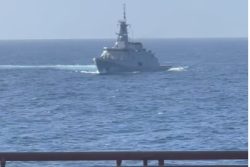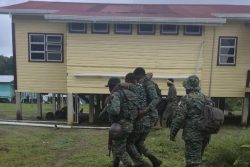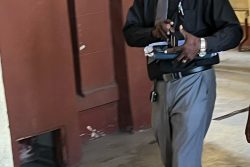Dear Editor,
As I travel across the Essequibo Coast, I see nearly half of the 35,500 acres of rice lands uncultivated because of the lack of irrigation water, especially in the main conservancy canal, which distributes water to the fields in every section of the rice-growing region. This is the end of January 2016, and the farmers are supposed to have rice in the flowering stage at this time, but almost 3 months have gone and there is no water to cultivate the rest of lands which are bone dry.
A greater danger is now is looming in the Essequibo rice industry; the young rice which was lately sown will be affected by salt water which I saw seeping through sluice doors. The little sweet water which is left for pumping to save the young paddy plants in the drainage and irrigation canals could be contaminated with salinity. Most of these sluices or kokers are in a deplorable state and need urgent repairs.
Due to 23 years of government maladministration, the tide turned against the rice industry because basic infrastructure had been totally neglected. The coalition government was given a basket to fetch water, and will have to start from scratch with a new plan to rehabilitate the infrastructure for the rice industry. I quite agree with Mr Majeed, a former overseer with whom I also worked in the Drainage and Irrigation Department, that the Tapakuma irrigation scheme needs a total overhaul, starting from the Dawa pumping station, leading to the main canal to the Somerset and Berks outfall channels to the north and the Supenaam creek to the south.
The main canal embankment running from Supenaam to Charity needs higher and wider empoldering; this can be done by deepening the main canal to conserve a higher volume of water. The present regulators on the main canal embankment are too small to irrigate the sections in a timely manner, and these will need to be rebuilt on a larger scale which will facilitate the high lands receiving gravity flow at a faster rate. Since the construction of the Tapakuma irrigation scheme in 1964, there have been two extension projects which were done by Taylor Woodrow and Reed and Mallik and company, two British contracting firms, which provided more lands and better drainage and irrigation, which are inefficiently utilized.
The Blackstone pumps at Dawa for decades pumped water well below capacity.
They had the capacity to help maintain the water level in the Tapakuma lake and the main canal, but never pumped the amount of water they were designed for. The drainage and irrigation systems malfunction and operate inefficiently because of inadequate maintenance or failure to correct some minor fault.
The Blackstone pumps were replaced with smaller ones because of lack of foresight. The sluices on the sea dam when they are locked down by the operators, do not rest flat on the surface of the concrete bed below the water, causing salt water to penetrate below. It is difficult to observe unless you look carefully in front of the draught; this has been going on for decades. Those who were responsible for the proper and effective functioning of this infrastructure never repaired it until it collapsed. These officers paid no heed because everything was going well; fresh water was plentiful in those days. In the El Niño period of 1998 when the water became salt due to a long dry spell and was extremely low in every trench and irrigation canal, the sea water began to move inwards because of the seepage through the koker doors.
The rice plant is particularly susceptible to salt at the early growth and flowering stages; if the level of salt is high at these times the yields will be lower with plenty unfilled grains and greater chalkiness. The Drainage and Irrigation department along with the Extension department should continue to monitor the salt content in the irrigation water.
Yours faithfully,
Mohamed Khan









